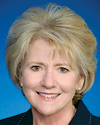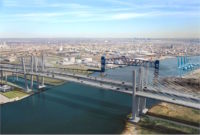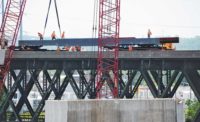Despite the global recession, a panel of transportation experts meeting in Seattle agreed now is the time to invest in and improve transit systems as part of a comprehensive and holistic solution to pollution and congestion. “The American public had the infrastructure that was once the envy of the world....We let it crumble,” said Patrick Natale, executive director of the American Society of Civil Engineers. “But it’s a new day. We finally have the leadership to take action, and it’s very exciting.”
Planning is as crucial as funding. Susan Zielinski, University of Michigan’s managing director of sustainable mobility and accessibility research and transportation, said researchers layered maps of various cities’ energy grid, bus routes, rail lines, roads and other systems on top of each other and determined cities like Washington, D.C., may already have the necessary infrastructure to integrate multimodally, with only minor investment needed.
Natale and Zielinski spoke at the annual Women’s Transportation Seminar conference, held May 20-22 in Seattle. The panel also included urban and regional economics consultant Rosemary Scanlon, who emphasized the need to integrate movement of people and goods for the long term, and Jeff Morales, director of strategic initiatives and government relations for Parsons Brinckerhoff, New York City, who echoed the sense of optimism many officials have in the new Obama administration. “We’ll see a thoughtful process over the next few years to develop some solutions,” said Morales, who served on Obama’s transition team for transportation. “It’s going to require some very different thinking.”
Morales called the federal economic stimulus plan a “down payment” and identified the inclusion of $8 billion for high-speed rail as a marker of the new direction the administration will take in addressing the country’s transportation needs as authorization of a new bill looms.

PETERS
Mary Peters, a keynote speaker and former U.S. Dept. of Transportation secretary, called for that new direction to include public-private partnerships, vehicle-miles-traveled fees and carbon taxes—but not raising the traditional fuel tax for the transportation trust fund. “Too often we let sources of funding” direct the transportation solution, she said.
Seattle-area officials plan to open the first segment of a new light-rail line between downtown and the airport this July. “In 15 years, 70% of all [Seattle] residences will be connected by rail,” said Mayor Greg Nickels (D).
Another panel of public leaders said the stimulus has successfully put construction into the pipeline, but all spoke of various ways to fund new projects. For instance, Oregon Transportation Commission Chairwoman Gail Achterman said the state was planning to adopt a 6¢ increase in vehicle registration fees, and Massachusetts Highway Dept. Commissioner Luisa Paiewonsky said her state has a 19¢ gas-tax-increase proposal in the works. Achterman called the stimulus “a huge drop in an enormous bucket.”
The conference drew some 300 attendees. “Given the timing of the new administration and confirmation of appointees, several key officials were not able to attend the conference this year,” notes Diane James, WTS executive director. “In 2010 with our conference in Washington, D.C...we expect to have greater representation of key federal transportation leaders.”






Post a comment to this article
Report Abusive Comment